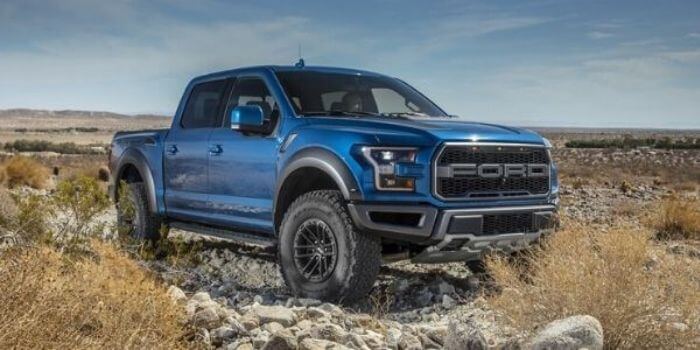So, you have decided to upgrade your tires for both on and off-road driving, but how will you know which is the best for your Ford F150 trucks?
It’s simple; you evaluate the tires with some criteria. To do that, first, consider these factors below.
Can It Handle the Pressure and Weight of Your Ford F150?
Do you want to put the tires in your F150 truck for carrying heavy loads? Or you’re going to use it in your truck for personal stuff?
If it’s heavy commercial stuff, then you’ll need to get tires that can handle higher pressure and weight. This should be considered even in personal usage.

How Strong Is the Sidewall?
Sidewalls play a part in durability. They protect the tire’s interior and increase longevity. Thicker sidewalls mean sharp objects can’t enter.
The thickness also increases shock and vibration absorption. Off-road driving requires it more than any other. That’s why, the supermoto tires all have amazing sidewall.
Speed Rating
The speed rating of a tire is the speed limit. After the vehicle passes the speed limit, the tires start heating up and become unstable. And all that heat increases tread wear.
Why Heat Diffusion Technology Is Important
Since the tire experiences a lot of friction and stress, the temperature can go high pretty quickly and cause it to be damaged. That’s why it’s very important that the heat is evenly distributed throughout the tire to make sure it’s not overheated.
And heat diffusion technology can just do that. With this technology, the heat is distributed evenly. That prevents the overheating and ensures a sustainable design of the tire.
Measurements
The size of your tires is determined by the wheel’s outer diameter in inches. You’ll find different tire size conversion guides to know your size requirement. And you need to count how many tires you’re going to use, and also the add-in wheel size.
In the market, there are wheels from 15 inches to 22 inches for you to choose from. Wrong measurement and sizing mean loss of money.
Tread Pattern: Compound
Most modern tires for multi-terrain driving now have a compound tread pattern. Its necessity arose due to the problem of tread wear.
The wider and deeper tread pattern is too unstable to drive on highways and other hard surfaces.
That can be harmful to the tires. however, compound tread pattern helps with handling and stability especially, in tough conditions such as wet roads.
So, as a result, wider treads take care of the mud-terrain whilst keeping their shape on hard pavements.
Tire Stability on Rough Terrains
On tough terrains, tires have a tough time with its stability due to wider treads. It’s vital that your tires are rigid enough to withstand the pressure and friction of street driving.
As a solution, engineers fit steel frames inside the tires as reinforcement to its structure. This frame supports make the tire highly rigid that counters the weakness of wide treads.
So it’s stable on rough pavements. Highly rigid tires do not wear out as easily as soft tires do.
Ability to Avoid Puncture
A punctured tire in the middle of the road isn’t delightful. When driving on roads, stones and small objects get into the tread grooves, and over time, they damage the tire.
Strong sidewalls prevent these phenomena quite well. But more importantly, those stone ejectors in the modern tread design work better by pushing out the stones immediately. Stone ejectors are small rubber structures in the tread design.
Bigger Tread Blocks
Traction is vital for all-terrain tires as you may use them both off-road and on-road. And the larger the tread blocks, the more traction you’ll get. Also, larger tread blocks are more durable and can withstand wear and tear for a long time.
Brand
Buying from brands has its perks. Brands like WestLake, Falken, Nitto, Federal, and others are known manufacturers of good quality tires.
Their assurance of quality made them popular among the customers. Moreover, you’ll be getting warranties for your products from brands.
Silica/Carbon Treated Rubber
The rubber material of tires wears easily due to friction. To counter this problem, engineers use Silica and Carbon coatings to increase the tire’s longevity.
But it has another benefit too. The coating also prevents mud and debris from sticking to the tire surface for better traction.
Price
If you buy from premium brands, it’ll cost you a lot of money. But you’ll find brands that give the same quality for a much lower price.
Of course, you’ll lose some additional features. Your criteria should be a price-performance ratio. You don’t want to spend a ton on just the wheels.